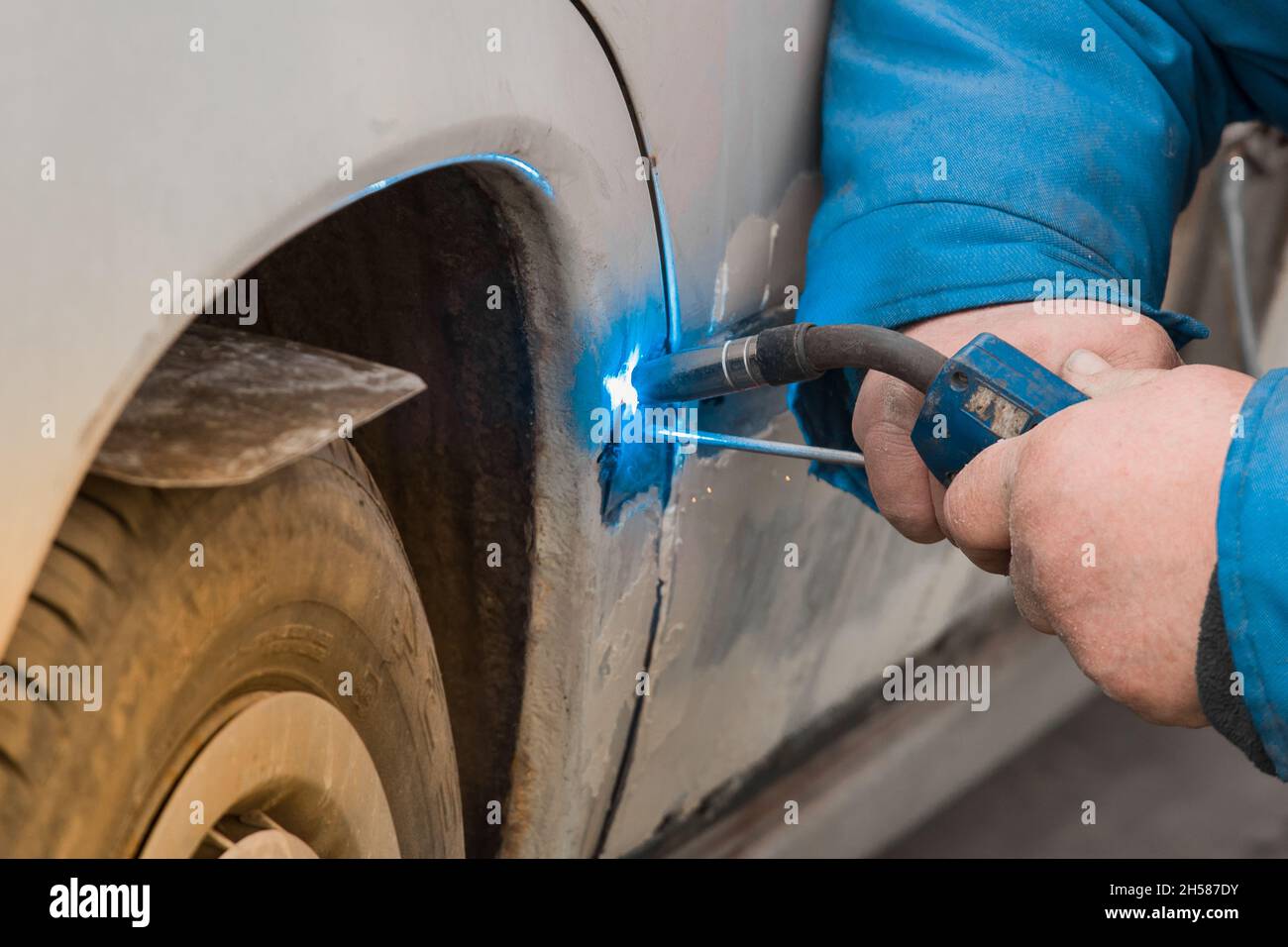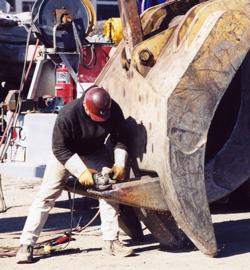All About Welding: Secret Insights Into Techniques and Ideal Practices for Success
Welding includes a variety of methods, each matched for details products and applications. Understanding these approaches, such as GMAW, SMAW, and TIG, is vital for achieving suitable results. Furthermore, the appropriate equipment and security methods can not be overlooked. As prep work and troubleshooting play crucial duties in the welding procedure, mastering these aspects can substantially improve the quality of the end product. What are the vital variables that guarantee a successful weld?
Comprehending Different Welding Techniques
Welding methods include a variety of techniques, each suited to certain applications and products. Among the most typical strategies are Gas Steel Arc Welding (GMAW), Secured Metal Arc Welding (SMAW), and Tungsten Inert Gas Welding (TIG) GMAW, likewise called MIG welding, is popular for its speed and adaptability, making it optimal for slim products. SMAW, or stick welding, is favored for its simplicity and efficiency in exterior atmospheres, especially with thicker metals. TIG welding provides accuracy and control, making it ideal for elaborate work and non-ferrous metals (Montana Mobile Welding and Repair Fabrication). Each technique has its distinct benefits and considerations, allowing welders to select the most effective method based on the job's demands, product type, and wanted end results. Comprehending these techniques is crucial for successful welding
Crucial Welding Equipment and Devices
While different welding techniques need specific abilities, the right devices and tools are just as necessary for achieving high quality results. Necessary welding tools consists of welding equipments, which vary relying on the method-- such as MIG, TIG, or stick welding. Protective gear, consisting of aprons, gloves, and safety helmets, guarantees safety and convenience throughout the procedure. In addition, clamps and fixtures help protect materials in location, ensuring accuracy in welds. Consumables like welding rods, cord, and securing gas are likewise crucial parts that affect the high quality of the weld. Devices such as grinders and cutters facilitate surface preparation and post-weld finishing, contributing to a professional outcome. Spending in premium equipment ultimately boosts the performance and effectiveness of welding projects.
Security Practices in Welding
Appropriate safety practices are crucial in the welding market to shield employees from potential dangers. Welders have to wear appropriate personal safety equipment (PPE), consisting of headgears with proper shading, handwear covers, and flame-resistant clothing. Adequate air flow is vital to decrease direct exposure to dangerous fumes and gases produced during the welding process. Additionally, employees must be trained in the appropriate handling of welding tools to protect against crashes. Fire safety measures, such as maintaining flammable products far from the welding location and having fire extinguishers conveniently available, are essential. Routine evaluations of equipment and work areas can help recognize potential risks prior to they lead to mishaps. By adhering to these security practices, welders can produce a safer working environment and lessen dangers associated with their profession.
Readying Materials for Welding
Preparing products for welding is a crucial step that substantially influences the top quality and honesty of the last product (Belgrade Welding). Proper prep work involves cleansing the surfaces to remove contaminants such as oil, rust, and dirt, which can jeopardize the weld. Methods such as grinding, fining sand, or utilizing solvents are frequently employed to accomplish a tidy surface area. Additionally, ensuring that the products fit with each other well is necessary; gaps can lead to weak welds. It's likewise crucial to take right into account the alignment and positioning of the parts, as this will affect the simplicity of welding and the last end result. Ultimately, choosing the suitable filler product and ensuring compatibility with the base metals is important for attaining solid, resilient welds
Tips for Achieving High-Quality Welds
Accomplishing top quality welds requires interest to detail and adherence to finest techniques throughout the welding procedure. Correct joint prep work is essential, ensuring surface areas are tidy and free from pollutants. Selecting the suitable filler product and welding method based on the base metals is critical for perfect bonding. Keeping constant travel speed and angle while welding can protect against problems and advertise harmony. In addition, controlling heat input is important; excessive heat can bring about bending and damaged joints. Frequently inspecting the welds throughout the procedure enables immediate changes if necessary. Ultimately, utilizing suitable post-weld therapies, such as cleaning and tension alleviation, can improve the durability and stability of the weld, ultimately ensuring an effective outcome.
Repairing Usual Welding Issues
Welding commonly provides challenges that can influence the top quality and stability of the end product. Usual issues such as porosity, irregular weld beads, and overheating can emerge, each requiring specific repairing strategies. Understanding these issues is vital for welders to improve their abilities and accomplish excellent results.
Porosity Issues Clarified
Porosity can usually be overlooked, it continues to be a vital concern in welding that can endanger the honesty of an ended up product. Porosity describes the presence of small gas pockets within the weld bead, which can lead and compromise the joint to early failure. This issue commonly develops from impurities, moisture, or incorrect securing gas insurance coverage throughout the welding procedure. To mitigate porosity, welders must validate that the base materials are completely dry and clean, make use of ideal securing gases, and preserve regular welding criteria. Frequently inspecting the devices and atmosphere can additionally aid identify prospective concerns prior to they materialize in the weld. Resolving porosity successfully is important for attaining strong, durable welds that meet top quality criteria.

Irregular Weld Beans
Irregular weld beads can significantly affect the high quality and toughness hop over to these guys of a completed item. Various elements add redirected here to this concern, consisting of incorrect travel speed, wrong amperage setups, and inconsistent electrode angles. When the welder relocates also rapidly, a bead might appear narrow and do not have penetration, while relocating also slowly can trigger extreme buildup. Furthermore, using the incorrect amperage can cause either damaging or extreme spatter, both of which concession weld integrity. The welder's strategy, such as inconsistent lantern motion, can additionally bring about uneven grain look. To reduce these issues, welders should focus on preserving constant, controlled motions and making sure appropriate tools setups to achieve uniformity in their welds. Uniformity is key to accomplishing trustworthy and strong welds.
Getting Too Hot and Warping Issues
Too much warm during the welding procedure can cause significant getting too hot and warping concerns, impacting the structural honesty of the workpiece. These troubles commonly manifest as distortion, which can compromise alignment and fit-up, making more assembly challenging. Factors contributing to overheating include the selection of welding parameters, such as voltage and take a trip rate, along with the kind of product being welded. To alleviate these issues, welders need to keep consistent travel rate and proper heat input while keeping an eye on the workpiece temperature level. Furthermore, preheating or post-weld warm treatment can assist alleviate stresses created by quick cooling - Belgrade. Normal assessment and adherence to finest methods are important in avoiding overheating and ensuring the longevity and integrity of welded structures
Frequently Asked Concerns
What Are the Job Opportunities in the Welding Sector?
The welding industry uses diverse profession chances, including settings as welders, teachers, engineers, and examiners. Professionals can operate in production, building and construction, aerospace, and auto fields, taking advantage of strong need and affordable wages in numerous roles.
Just How Can I Improve My Welding Rate Without Giving Up High Quality?
To enhance welding rate without giving up top quality, one need to exercise effective techniques, maintain devices, optimize setups, and boost hand-eye coordination. Normal training and looking for feedback can additionally substantially contribute to attaining much faster, high-grade welds.
What Certifications Are Readily Available for Welders?
Many qualifications exist for welders, consisting of fupa 12 those from the American Welding Culture (AWS), the National Facility for Building Education and Study (NCCER), and various industry-specific companies. These credentials improve employability and show ability effectiveness.
Exactly How Does Welding Affect the Qualities of Metals?
Welding affects the buildings of metals by changing their microstructure, which can result in modifications in toughness, ductility, and hardness. Warm input and cooling rates during the procedure considerably affect these product attributes.
Can I Bonded Dissimilar Metals With Each Other?
